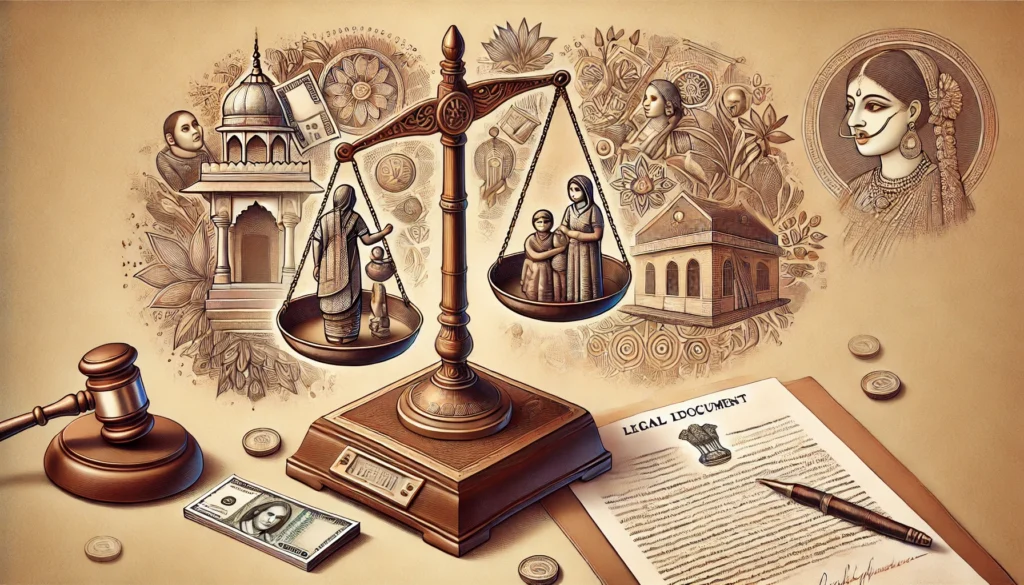Published On: 28th March, 2025
Authored By: Duvvuru Shiny Abraham
Sri Eswar Reddy College of Law
INTRODUCTION:
Workplace discrimination represents a critical challenge in modern organizational environments, with India being no exception to this global issue. Despite significant progress in promoting equality, discriminatory practices persist across various dimensions, including gender, caste, religion, disability, and sexual orientation. The Indian legal framework has systematically evolved to combat these challenges, yet the effective enforcement and implementation of anti-discrimination laws remain a complex ongoing process.
The roots of workplace discrimination often lie deeply embedded in societal and cultural biases that profoundly influence organizational attitudes and behaviors. Multiple interconnected factors such as gender, caste, religious background, and socioeconomic status significantly shape how individuals are perceived and treated within professional environments. For instance, entrenched patriarchal norms frequently lead to gender-based discrimination, where women encounter substantial barriers in career advancement and are often relegated to lower-paying positions. Similarly, caste-based prejudices can create systematic barriers that result in unequal opportunities and fundamentally unfair treatment for individuals from marginalized communities.
These discriminatory biases are frequently unconscious, making them particularly challenging to address without deliberate, strategic interventions aimed at transforming organizational culture and policy frameworks. Recognizing and actively challenging these systemic inequalities requires a multifaceted approach that goes beyond mere legal compliance.
Workplace equality emerges from a comprehensive recognition of existing disparities and a committed effort to create inclusive environments where all employees can access equitable opportunities for professional growth and success. Legal frameworks, including anti-discrimination statutes and affirmative action policies, play a pivotal role in promoting workplace fairness. However, achieving genuine equality demands more than procedural compliance; it necessitates a fundamental cultural transformation within organizations.
This transformation involves cultivating environments that genuinely value diversity, actively encourage equal participation, and systematically work to eliminate biases across recruitment, promotion, and daily workplace interactions. Such a commitment to equality can ultimately yield significant organizational benefits, creating more productive, innovative, and harmonious workplaces where every employee feels valued, respected, and empowered to contribute their full potential.
Understanding Discrimination in the Workplace
Workplace discrimination manifests when an employee or group of employees experiences unfair or unequal treatment based on specific personal characteristics. These characteristics can include gender, caste, religion, disability, sexual orientation, and other fundamental aspects of individual identity. Discrimination can emerge through various complex and interconnected forms:
- Sexual Harassment: Unwanted sexual advances, inappropriate comments, or conduct of a sexual nature that creates an uncomfortable or hostile work environment.
- Bullying: Persistent aggressive behavior, whether verbal or physical, intentionally designed to intimidate, marginalize, or harm targeted individuals.
- Cyberbullying: Digital platform-based harassment occurring through social media, email, messaging platforms, and other online communication channels.
- Workplace Harassment: Broad category encompassing unwelcome behaviors including discrimination, bullying, intimidation, and systematic exclusion.
- Racial Harassment: Discriminatory practices or prejudicial treatment based on an individual’s race, ethnicity, or national origin.
- Religious Harassment: Unfair treatment or systematic discrimination stemming from an individual’s religious beliefs or practices.
- Gender-Based Harassment: Targeted harassment directly linked to an individual’s gender, affecting both men and women across professional contexts.
- Age-Related Harassment: Discriminatory practices or mistreatment specifically targeting individuals based on their age demographic.
- Disability Harassment: Unfair treatment, marginalization, or discrimination against individuals with different physical or mental capabilities.
- Online Harassment: Digital-based harassment including online stalking, trolling, and persistent unwanted digital interactions.
- Verbal Harassment: Unwelcome verbal comments, insulting language, or offensive communication intended to demean or intimidate.
- Physical Harassment: Unwanted physical contact or actions deliberately causing harm, discomfort, or threatening an individual’s personal boundaries.
- Psychological Harassment: Emotional and mental distress generated through persistent harmful behavioral patterns.
- Sexual Orientation Harassment: Discriminatory treatment or systematic marginalization based on an individual’s sexual orientation.
- Stalking: Repeated, unwanted attention involving consistent following, monitoring, or intrusive behaviors targeting a specific individual.
Legal Framework Against Workplace Discrimination in India
India’s constitutional and statutory landscape provides a comprehensive framework to address workplace discrimination. The legal provisions offer a robust mechanism for protecting individuals from discriminatory practices across various professional domains.
Constitutional Provisions:
The Constitution of India serves as the foundational document for ensuring equality and non-discrimination:
- Article 14: Guarantees fundamental equality before the law, ensuring that every individual receives equal protection under legal frameworks.
- Article 15: Explicitly prohibits discrimination based on religion, race, caste, sex, or place of birth, establishing a clear constitutional mandate for non-discriminatory treatment.
- Article 16: Ensures comprehensive equality of opportunity in public employment matters, categorically preventing discrimination in recruitment and workplace selection processes.
Key Statutory Protections:
The Equal Remuneration Act, 1976: This critical legislation mandates equal compensation for equivalent work performed by men and women. The Act goes beyond mere monetary considerations, prohibiting gender-based discrimination in recruitment processes and establishing standardized working conditions.
The Sexual Harassment of Women at Workplace (Prevention, Prohibition, and Redressal) Act, 2013: A landmark legislation designed to protect women from sexual harassment in professional environments. The Act establishes comprehensive mechanisms for reporting, investigating, and addressing sexual harassment complaints, thereby creating safer workplace ecosystems.
The Rights of Persons with Disabilities Act, 2016: This progressive legislation prohibits discrimination against individuals with disabilities in employment contexts. It mandates reasonable accommodations and ensures equal opportunities for professional growth and development.
The Transgender Persons (Protection of Rights) Act, 2019: A groundbreaking statute that explicitly prohibits discrimination against transgender individuals in employment sectors. The Act ensures fundamental rights to equality, non-discrimination, and professional opportunities.
Case Laws on Workplace Discrimination in India
Landmark judicial pronunciations have significantly reinforced principles of workplace equality and non-discrimination:
Vishaka & Ors. v. State of Rajasthan (1997): The Supreme Court established comprehensive guidelines to prevent sexual harassment at workplaces. These Vishaka Guidelines were subsequently codified into the 2013 Sexual Harassment Act, representing a crucial milestone in addressing workplace gender-based discrimination.
Air India v. Nergesh Meerza & Ors. (1981): A pivotal judgment where the Supreme Court declared the termination of an air hostess’s employment upon pregnancy as unconstitutional. The court explicitly highlighted the discriminatory nature of such practices, invoking Articles 14, 15, and 16 of the Constitution.
Indra Sawhney v. Union of India (1992): Famously known as the Mandal Commission case, this judgment addressed job reservations for backward classes. The Supreme Court upheld the constitutionality of job reservations while imposing a critical 50% cap on public employment reservations.
National Legal Services Authority v. Union of India (2014): A landmark decision recognizing transgender individuals as a third gender. The court directed governmental bodies to provide reservations in education and public employment, thereby combating systemic discrimination.
Recent Amendments and Developments
The Maternity Benefit (Amendment) Act, 2017: Extended maternity leave from 12 to 26 weeks, reinforcing workplace equality by providing enhanced support for working mothers.
The Code on Wages, 2019: Consolidates labor laws related to wages, ensuring equal remuneration and preventing discrimination in wage payments across all employment sectors.
The Occupational Safety, Health and Working Conditions Code, 2020: Integrates various workplace safety laws, including explicit provisions to prevent discrimination and promote equality in professional practices.
Does the Constitution apply to the private sector?
The application of constitutional protections to private sector discrimination presents nuanced legal considerations:
- Most fundamental rights primarily address state actions, yet Article 15(2) explicitly addresses private individuals.
- While most discrimination cases target governmental entities, private sector accountability is increasingly recognized.
- The landmark Indian Medical Association (IMA) vs. Union of India case demonstrated a progressive interpretation. The court viewed constitutional provisions through a lens of national aspirations, emphasizing socio-economic justice and equality.
- Judicial interpretations suggest that private sectors cannot facilitate discriminatory practices and may be held liable for constitutional breaches.
Need for an Anti-Discrimination Policy at the Workplace
Implementing robust anti-discrimination policies offers multifaceted organizational benefits:
- Employer Branding: Demonstrates organizational commitment to employee welfare and progressive values.
- Legal Compliance: Reduces potential liability and aligns with constitutional and statutory requirements.
- Behavioral Guidance: Provides clear behavioral expectations and accountability mechanisms.
- Bias Mitigation: While not eliminating personal biases entirely, establishes clear professional standards that prevent discriminatory implementations.
Challenges in Enforcement and Implementation
Despite comprehensive legal frameworks, significant challenges persist:
- Limited Awareness: Widespread ignorance about legal provisions and individual rights.
- Cultural Impediments: Deep-rooted societal norms perpetuating discriminatory practices.
- Inadequate Redressal: Existing complaint mechanisms often appear biased or ineffective.
- Judicial Delays: Prolonged legal processes discourage victims from seeking justice.
- Representation Gaps: Marginalized groups frequently lack meaningful representation in decision-making roles.
The Way Forward
Achieving genuine workplace equality requires strategic, comprehensive interventions:
- Comprehensive Awareness Campaigns: Educate employees and employers about anti-discrimination rights.
- Robust Redressal Mechanisms: Enhance internal complaint committee effectiveness.
- Continuous Training: Implement regular sensitization programs across organizational levels.
- Diversity Incentivization: Introduce governmental incentives for inclusive workplace practices.
- Judicial Reforms: Expedite discrimination case resolutions.
Conclusion
Workplace discrimination and equality represent complex, multidimensional challenges requiring holistic approaches. While India has made substantial legal progress, implementation remains challenging. Continuous efforts towards strengthening awareness, improving redressal mechanisms, and fostering inclusive cultures are paramount.
The journey toward a discrimination-free workplace is ongoing. Through persistent, strategic interventions, India can progressively create more equitable, just, and inclusive professional environments that respect individual dignity and potential.



